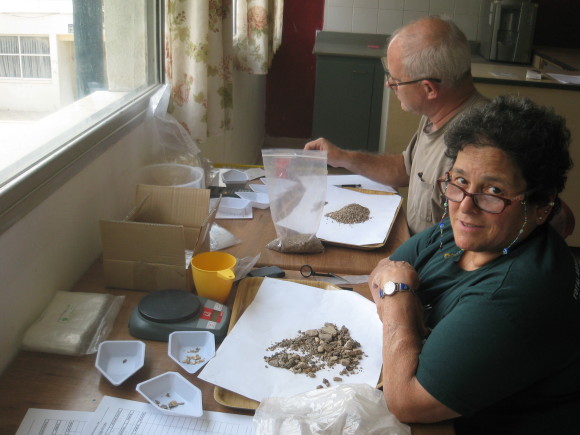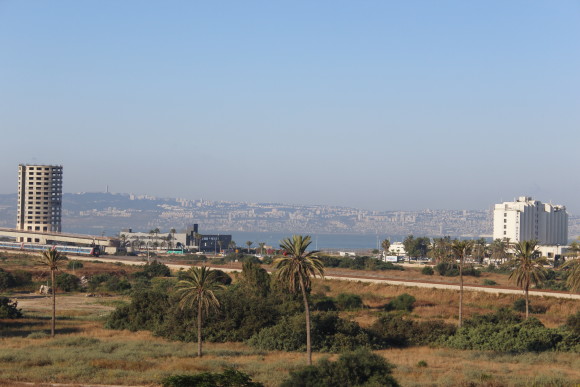For a few days now I’ve been helping with some archaeobotany. Anyone who knows me knows I don’t really like biology, being more of a physical sciences kind of gal, but, this is interesting. We take soil samples that are “floated” to find any seeds, and other organic remains. In the process, there is a portion of the sample that falls to the bottom of the tank of water, the heavy fraction. I’ve been sorting through the heavy fractions. We find shells, pieces of pottery, bronze, lead and bones. On some of the samples, when we run a magnet over them we get pieces of slag, the remains of iron ore processing, and hammer scales, the remains of iron tool making. These are tiny blobs of iron that are forced off when the hot metal is struck. The samples are sort of a grab bag of the areas we are working as part of Total Archaeology at Tel Akko, a joint project of Penn State and Haifa University.


